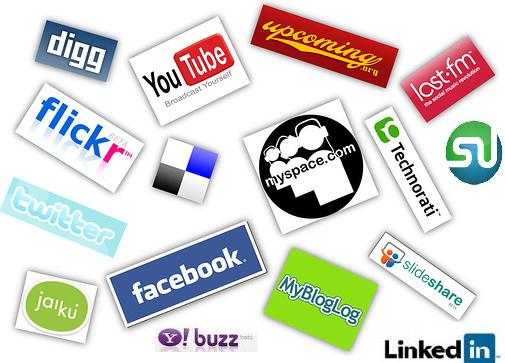We conclude our series of interview on Content Locking with the CEO of perhaps the most well-known of the content locking companies, CPALead. They have been in the industry the longest and are almost always refereed to in any conversation about the topic. Peter Tarr, the impending CEO CEO of CPALead joined recently this year, and takes over a company that is rumored to be one of the top sources of traffic for a dozen network and hundreds of advertisers. We sat down with Peter and asked him questions about the industry and more importantly, the future of the industry.
- Can you tell me a bit about your professional background and how you first got started in this industry?
Sure, prior to joining CPAlead, I held an executive role with a competing incentive-based CPA firm where I was responsible for international business development. Before this, I held a managing position at Fortune 50 company Proctor & Gamble, where I oversaw employee activity and worked closely with high-profile clients to drive sales and develop future go-to-market strategies. I’m now the impending chief executive officer for CPAlead, where I’m responsible for the development and execution of strategic initiatives both globally and domestically.
- CPAlead was founded in 2006. Tell me about how CPAlead came to be and how the business has grown over the years?
The idea for CPAlead’s flagship product, the Content Locker arose from our co-founders’ experience in the online virtual currency space. As video game lovers, they created this space in 2006 as a means to have advertisers pay for in-game rewards in exchange for the player’s interaction with the advertisement – but they also saw potential to shake up the online advertising industry.
They then created the Content Locker with the goal of providing a method for web publishers to easily earn money. This was a turning point in the industry as advertisers were selective as to where their budgets went, and we were a relatively new business model. If a user wants to view the content, all they have to do is interact with the widget – the publisher gets paid and the visitor gets to view the desired content without dealing with a paywall or subscription.
Today, CPAlead has a client base exceeding 150,000 and 23 employees. We were also named to this year’s Inc. 500 list as the 40th fastest-growing private company in America, 6th fastest growing online company and #1 online marketing & advertising firm.
- Why should someone choose CPAlead as their CPA network? What can you offer that others can’t?
CPAlead provides the highest paying model available online, as our platform generates exponentially greater revenues than CPC, PPC or CPM models on a lead-to-lead basis. The advertisements we provide are highly tailored to your audience, so they really fit your content. We also run our business on trust and transparency, ensuring our publishers get paid for their content and providing them with a very individualized experience.
- CPAlead founded the Virtual Currency model and created a new segment in the online marketing world. Can you explain exactly how this model works?
The model was conceived as a solution for online video gamers with limited financial resources. The solution allowed gamers to have advertisers pay for in-game rewards in exchange for the player’s interaction with advertisements. Streets-of-LA.com, the first online game to implement this technology, experienced a substantial revenue increase when the number of players utilizing our technology quickly and dramatically grew.
Our current offering, the Content Locker, is an evolution of monetizing content in the online virtual space, taking the idea of online virtual currency and applying it to a web publishing monetization platform.
- What advantages does the Content Locker provide Publishers and Advertisers?
According to a Harris poll of more than 2,000 U.S. adults, 80 percent of respondents are not willing to pay to read a daily newspaper’s online content. This is certainly indicative of the larger trend that most people are unwilling to pay for other content whether it’s from online newspapers or other web publishers –the Content Locker provides an alternative for publishers that won’t make them compromise revenue or traffic.
CPAlead allows publishers to monetize content that may not otherwise drive revenue by providing a payment alternative for customers who do not want to spend money on content, thus abandoning a site at the point of sale. The advertisements are targeted to each individual site so that users are presented with ads (or offers) that are relevant to them so advertisers are essentially paying for the content in exchange for the user’s attention. With CPAlead, the web publisher, advertiser and consumer all win.
- What do you feel is the biggest challenge in the entire incentivization industry?
Monetizing content without losing readers. Publishers need to find a way to be profitable, but also need to make sure customers don’t abandon the site when they come across a monetization solution such as an advertisement or payment tool.
- Let’s talk strategy. What is CPAlead’s international strategy and where are you expecting the bulk of the growth to come from?
Given that we’re an online based company with a solution that can be applied globally, we’ve had the advantage of being able to cater to international clients from the get-go and have had some strong success. Now, with that said, we have put more of a focus on our domestic business since it is a bit easier to grow a company in an area where you’re familiar with business practices and where partners are an arm’s length away. However, we are focused on growing our relationships abroad – we believe that, for the immediate future, the key to being successful on an international stage is to build strong relationships with international partners such as advertisers and publishers.
- What elements should advertisers and publishers be tracking and testing when running a campaign?
When it comes to campaign optimization, there are a few items to consider. First and foremost, you want to ensure that you are delivering relevant content to interested users. Once you feel as though you’re getting your campaign in front of the right people, you want to split test against other campaigns in your inventory. Regardless of what anyone says, marketing is never an exact science. What you and I think should be successful may not gain traction at all. Conversely, a campaign that seems poorly conceived may gain traction overnight and become wildly popular. If you look at Fortune 500 companies, you’ll see that a lot of them have strayed away from tradition. Take for example P&G, they have always been regarded as a conservative company when it came to marketing until the recent campaigns for Old Spice kicked off. It goes without say that someone must have thought there was no chance they would gain traction but the end result was an extremely successful campaign that has now become a piece of pop culture (the “This is your man” series). In the end, we can draw the conclusion that split testing one against the other is a necessity.
- It says on CPAlead’s website that your mantra is trust and transparency. What strategies are put into place to ensure that online fraud is simply not an option?
We adhere to all industry rules and regulations and run our business with integrity. We allow publishers to only monetize ethical content – or rather content that they have the right to monetize. Our platform’s technology deters publishers from monetizing unethical content.
- What are some of dangers you see as the online marketing industry continues to grow?
I think the biggest danger from a growth perspective is this continued love affair with complacency. Publishers, users and advertisers deserve more, yet don’t demand it. It’s counter intuitive but unfortunately true. The same old display methods and monetization solutions that existed at the inception of the internet are still dominant. Our platform takes the industry in a radically new direction and allows everyone involved to realize exponentially greater benefits.
From a security perspective, I think that the trend to further consolidate information is a good thing but also merits increased security measures. We’re already at the point where our mobile phones can store our entire lives – including our finances and while that allows us to have a single point for organizing our lives, it also creates a single target for others who have malicious intentions.
- What are the 3 most pivotal moments in your career that you either learned from and/or that got you where you are?
The first would have to be the day I took my first professional job. I was working in finance doing analysis and stock trading. I think that relieved a lot of pressure from being a money-strapped student, and I had to make the decision whether I was satisfied simply to have something I could build on, or whether I really wanted to bear down and aspire for something greater. I learned a lot about myself and declared war against any sort of self-complacency.
The second would have to be when I left that career to take a management position with a Fortune 50 company. That was the day I put my beliefs on aspiring to put greater things into practice, and dramatically changed what I was involved in for the greater good of my career.
The third and perhaps most pivotal moment was shortly after I had left P&G where I was in a management position. I had just left the online firm I was working with and had been given an even greater opportunity to return to work with a Fortune 500 company in a position of authority – greater than what I had seen. This was the corporate dream offer, so to speak, and I had to decide whether I wanted to undertake that position or take a risk and go after something where I believed in a smaller company and saw a greater future for myself and that company. As it turns out, I chose to go with the latter and here I am at CPAlead, where I still believe the future will only get brighter and brighter. I think the lesson learned was that, while you need to do your homework, you need to – above all else – believe in yourself. Believe in your ability to have an impact and if you think that there is a good opportunity – you have to believe that you yourself can make it into something even greater. I think all too often we’re concerned with what a company already is – which is why Fortune 500 positions are the dream. If you’re in a company that is already established, you feel as though there is less pressure on you to make a difference since you won’t have as great an impact on the bottom line. However, if you take that challenge, believe in yourself and deliver – the rewards are exponentially greater in my opinion.
- Any words of wisdom for someone who looking to get into this industry?
Absolutely – try to understand where you can deliver value and believe in yourself. It’s not always about getting to the highest point on the corporate ladder, but rather the right point for you. If you’re the best at what you do, you’re going to be successful, period. So figure out where your strengths are and deliver value.
- If you had a money tree in your back yard and could purchase anything for your business tomorrow, what would it be?
Great question. I think I’ll take the lighter side of this question and say a top notch health and exercise facility. We’re really big on promoting healthy living at the office – it’s a big part of our culture and we’re always looking for ways to help facilitate. It isn’t all about coming into the office and working – how healthy you are impacts not only your ability to work but your ability to live well. I’m pretty heavy into fitness and wellness, so I would love to purchase a state-of-the-art facility for our group here.





















